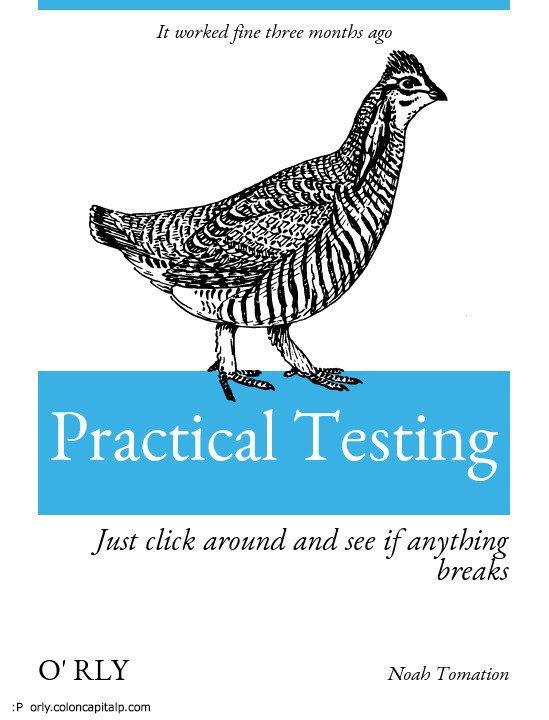
In the bustling tech hub of CodeVille, where the clatter of keyboards is the music of progress and the glow of monitors the light guiding innovation, there arose a methodology as timeless as it was perilous: "Practical Testing." This approach, characterized by the mantra "It worked fine three months ago | Just click around and see if anything breaks," became the unofficial testing protocol for a band of developers known for their swift deployments and daring disregard for conventional testing methods.
At the center of this narrative is Jordan, a developer whose brilliance was only matched by their confidence in the robustness of their code. Jordan, leading a team of like-minded coders, had long eschewed the rigidity of structured testing in favor of a more intuitive approach. "If it looks right, it probably is right," was the team's guiding principle, a belief that had seen them through numerous deployments with a success rate that bordered on the miraculous.
However, as CodeVille's digital landscape grew more complex and the applications more integral to the fabric of daily life, the limitations of "Practical Testing" began to surface. The first signs were subtle—anomalies dismissed as quirks, bugs rationalized as features in disguise. But as time wore on, the repercussions of their methodology became impossible to ignore.
"It worked fine three months ago," became a refrain of frustration for the users of their applications, who found themselves navigating a minefield of undocumented changes and unexpected behaviors. "Just click around and see if anything breaks," turned from a strategy into a challenge, as clients and customers became unwitting participants in a game of digital roulette.
Confronted with the escalating fallout of their approach, Jordan embarked on a journey of revelation and redemption. The turning point came during a particularly catastrophic failure, when a seemingly minor update triggered a cascade of errors that brought the application to its knees, affecting countless users and tarnishing the team's reputation.
In the aftermath, Jordan and their team faced a choice: to double down on their disdain for formal testing or to evolve. Choosing the latter, they delved into the world of structured testing methodologies, discovering a realm of possibilities that ranged from automated unit tests to comprehensive integration and stress testing protocols.
As they integrated these practices into their development process, a transformation occurred. Code that was once deployed on a wing and a prayer was now subjected to rigorous validation, revealing vulnerabilities that "Practical Testing" would have never uncovered. Bugs were squashed before they could hatch into disasters, and the team's confidence in their releases was no longer founded on hope but on empirical evidence.
The tale of "Practical Testing: It worked fine three months ago | Just click around and see if anything breaks" became a cautionary legend within CodeVille, a reminder of the perils of complacency and the importance of embracing change. It served as a testament to the fact that while intuition and experience are invaluable assets in the realm of software development, the discipline of testing is the foundation upon which reliable, robust applications are built.
And so, Jordan's story, from the highs of unfettered creativity to the lows of public failure, and back to the heights of professional growth and recognition, underscored a fundamental truth in the art and science of software development: that the path to excellence is not paved with shortcuts but with a commitment to quality, a dedication to learning, and the courage to evolve.